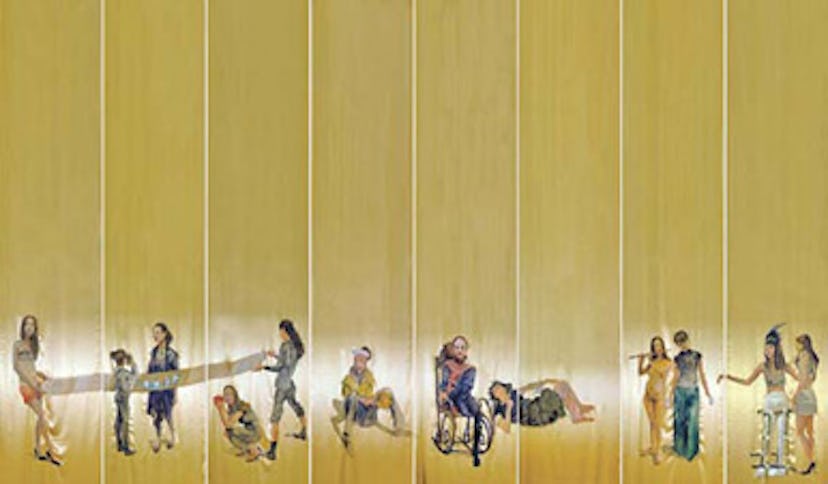NOV 20: Fresh Ink
Artist Jeffrey Vallance interviews the master of surrealism—in the afterlife. Jonathan Wingfield listens in.

According to curator Hao Sheng, the “Mona Lisa of Chinese art” can be found in, of all places, Boston. And Court Ladies Preparing Newly Woven Silk, a 12th-century scroll that, says Sheng, “represents the highest standards of Chinese painting,” will be on view this month as part of “Fresh Ink” (November 20 to February 13, 2011), an exhibition at the Museum of Fine Arts, Boston. For the show Sheng commissioned 10 Chinese artists to create work inspired by the museum’s extensive collection of Chinese paintings. “In the West we have this myth that creativity comes out of thin air,” he says. “But in China looking at earlier works is part of the formula for creating new art.” Beijing-based Yu Hong updated Court Ladies, recasting it with 12 contemporary Chinese women who “collectively paint a picture of modern China,” says Sheng. Yu’s husband, Liu Xiaodong, used images of Boston high schoolers to echo the violence in a 15th-century scroll of demon soldiers. Other artists took Sheng’s directive less literally. U.S.-born Arnold Chang argues that his artistic forebearers are the Abstract Expressionists, and thus Jackson Pollock’s Number 10 (1949) will appear alongside Chang’s Secluded Valley in the Cold Mountains and Brushwork Study for Reorienting Pollock. “Asking the audience to think about how they look at a Pollock will allow them to see more in Chinese ink paintings,” Sheng explains. As with all the pairings, “the old work will historicize the new by telling you where it came from, and the new work will revitalize the old by bringing new questions and perspectives.”
Courtesy of the Museum of Fine Arts, Boston